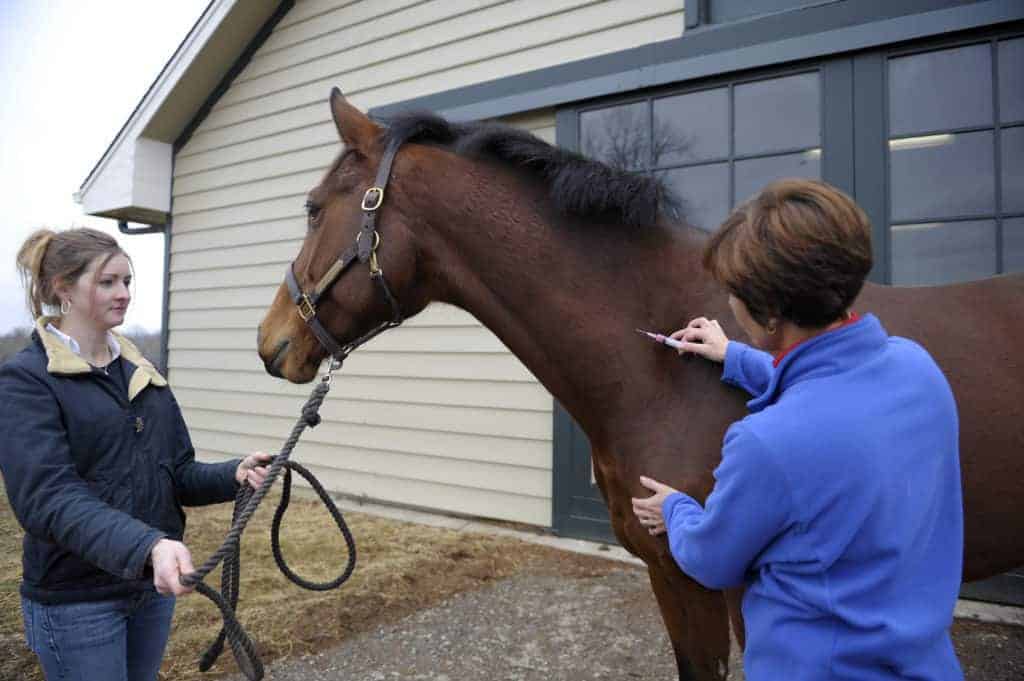Effectiveness of On-Farm Biosecurity Measures Studied
The Australian equine influenza outbreak provided a unique opportunity to evaluate some biosecurity measures.
The Australian equine influenza outbreak provided a unique opportunity to evaluate some biosecurity measures.
FluVac Innovator 4 is moving to the Pfizer label after the acquisition of Wyeth and Fort Dodge Animal Health.
More travelling and visitors for residents, and the admission of rescue cases prompted the new policy.
Since June 2011, the program has provided notification of more than 500 equine disease reports to subscribers.

Antigenic drift necessitates periodic vaccine updates to effectively combat new virus strains.

The most common equine respiratory disease signs were nasal discharge, fever, depression, and coughing.
The International Collating Center, Newmarket, United Kingdom, and other sources reported the following
Learn about flu, equine herpesvirus, and strangles respiratory disease at TheHorse.com/Webinars on June 30!

Flu, equine herpesviruses 1 and 4, and strangles commonly cause upper respiratory tract problems in horses with coughing, runny nose, and fever. How can you tell which one your horse has, and what can you do to prevent these diseases?
As international horse transport becomes more widespread, some owners might wonder if the same equine influenza vaccines designed to protect horses from common domestic strains of the disease will also shield them from foreign strains they might
We’ve all heard the statistics about an aging America. The elderly represent the fastest growing-proportion of the U.S. population. In recent years horses have experienced a similar population shift.
A large portion of the equine population (about 15%) is composed of horses older than 20 and, even at this age, many remain actively involved in equestrian sports, reproduction, or as companion
A 300-horse study sought to find the vaccination protocol that best prevents flu in horses–intranasal (IN) or intramuscular (IM), given as a single dose or two doses given 30 days apart (boosted). Researchers also looked at boosting an initial
Equine influenza (the “flu”) used to be considered a mere annoyance by many, but major outbreaks such as H1N1/swine flu in humans and the Australian equine influenza outbreak of 2007 have changed our thinking. These days, when a flu o
The Livestock Disease Diagnostic Center (LDDC) at the University of Kentucky now offers a molecular diagnostic assay to detect the H3N8 equine influenza virus (also known as type 2 equine influenza virus) in clinical specimens. Currently only the H3N8 subtype is associated with equine influenza virus outbreaks around the world.
The Western College of Veterinary Medicine’s Equine Health Research Fund (EHRF) has allocated a total of $69,000 to five new equine health research projects–all of which cover topics of vital importance for researchers and for horse owners.

Immunizations are the cornerstone of disease prevention if given appropriately and in a timely manner.
Stay on top of the most recent Horse Health news with
"*" indicates required fields